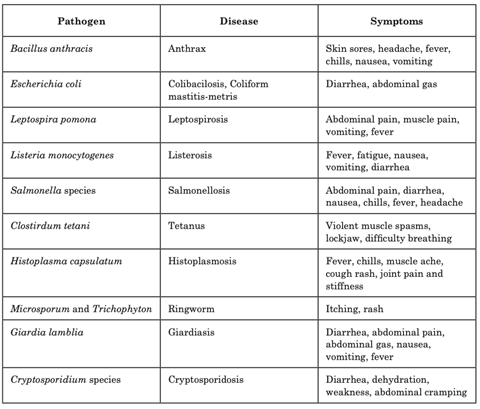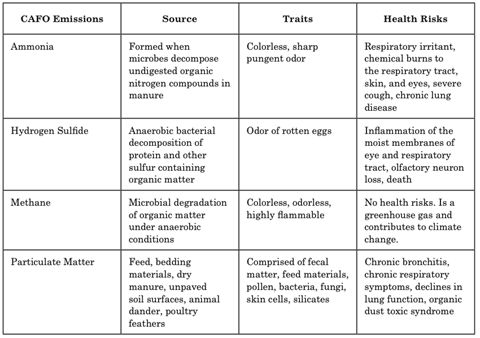By Brooke Lappe
Concentrated animal feeding operations, or CAFOs, are a type of agricultural facility that raises animals in high-density, for the purpose of providing meat, eggs, or milk. The Environmental Protection Agency (EPA) identified CAFOs as potential polluters in the 1970s because of the way they discharge waste into the water supply. The most pressing public health issues associated with CAFOs stem from the waste or manure produced. A single large, CAFO can produce more than 1.6 million tons of waste a year, which is more than the annual sanitary waste produced by urban cities. It is estimated that livestock produces between 3 and 20 times more waste than people, which amounts to over 1 billion tons of waste annually. Livestock waste contains a variety of harmful chemicals and pathogens, all of which have demonstrated negative impacts on human health. Although human waste is treated through sewage plants, no such treatment facilities exist for livestock waste, so humans can be exposed to waste contaminants and pathogens through the water they drink, the air they breathe, and the insects around them.
Water Impacts
Over 50% of American’s main water source is ground water (EPA 2005). Approximately 35,000 miles of rivers in 22 states have been contaminated with animal waste. When manure is leaked into ground and surface water, the ammonia seeps into the water and converts into nitrates upon contact with air. Nitrates and nitrogen poisoning is especially harmful to infants and can lead to blue baby syndrome and possible death. Nitrates also lead to low blood oxygen in adults, which has been linked to birth defects, miscarriages, stomach and esophageal cancer, and poor general health. Excess nitrogen can also be transported through runoff to surrounding farms and properties, where it can cause reduced tree growth, crop yield, and plant death. CAFO manure contains over 150 pathogens, such as E. coli and salmonella. When humans drink contaminated water, it can negatively impact their health, with an especially high risk to young children, pregnant women, elderly, or immunocompromised (Table 1).
Air Impacts
In addition to impacting water quality, the decomposing manure at CAFOs can reduce air quality in surrounding areas. CAFOs have been found to increase asthma in neighboring communities. The most typical air pollutants found are ammonia, hydrogen sulfide, methane, and particulate matter, which all have demonstrated risks to human health including bronchitis, cardiac arrest, and decreased lung function (Table 2). Occupational workers of these farms face the highest risk of these air quality impacts.
Insect Impacts
CAFOs with large amounts of animals and waste are breeding grounds for insects, which, in turn, can transmit diseases that lead to dysentery, diarrhea, and encephalitis to humans. Finally, confining large numbers of animals in close proximity exacerbates antibiotic-resistant bacteria, a huge concern globally, and the dispersion of drug-resistant bacteria can occur via water or insect vectors.

Source: https://www.cdc.gov/nceh/ehs/docs/understanding_cafos_nalboh.pdf

Source: https://www.cdc.gov/nceh/ehs/docs/understanding_cafos_nalboh.pdf
Further Reading
Learn more about CAFOs and their health impacts:
https://www.cdc.gov/nceh/ehs/docs/understanding_cafos_nalboh.pdf
https://www.nrdc.org/sites/default/files/cafos-dont-know-hurting-us-report.pdf
http://www.gao.gov/new.items/d08944.pdf
http://chestjournal.chestpubs.org/content/129/6/1486.full.pdf
http://www.saveantibiotics.org/resources/PewHumanHealthEvidencefactsheet7-14FINAL.pdf
http://www.michigan.gov/documents/CAFOsChemicals_Associated_with_Air_Emissions_5-10-06_158862_7.pdf
